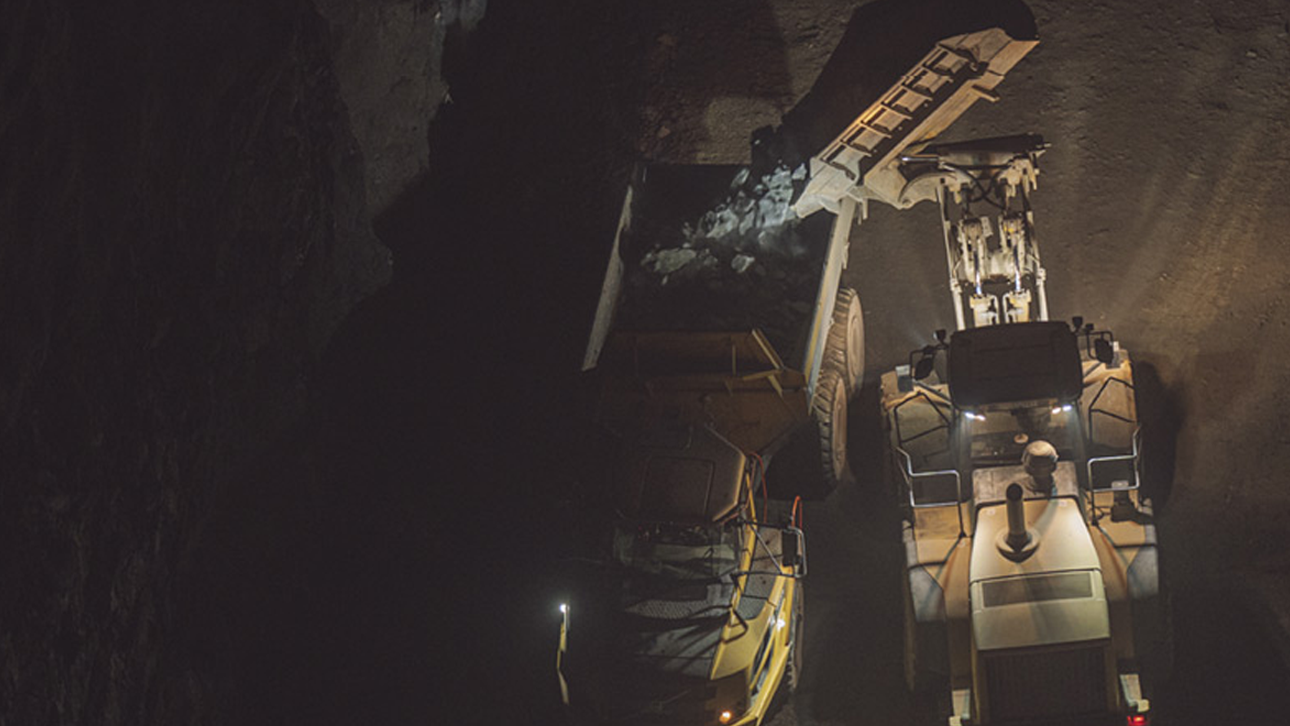
Unique site prevents contaminating discharges
A huge deposit of the waste sins of the past is hidden just over a kilometre into the mountain. The mountain is offering a helping hand, and the unique site prevents contaminating discharges from entering nature and the local environment.
22 Oct 2021Deep inside Stendafjellet, you can feel the great strength of the mountain. There is little or no mobile coverage. LED lighting works hard to illuminate the pitch-dark working environment, and the yellow helmets seem fragile beneath all the tonnes of hard rock.
The surroundings in the first large-scale mountain waste disposal site in Norway may make you think of a copper mine, scenes from the Lord of the Rings, or the Hall of the Mountain King in Peer Gynt.
They are huge, dark, noisy, and slightly spooky.
The site is used to deposit large quantities of mildly contaminated rock and earth excavated from former industrial sites and other areas that have been cleared.
A better sealed, drier solution
Just by Stendafjellet, in Rådal, a few miles from Bergen, is the second largest outdoor landfill site in Norway. This is where refuse from the population of Bergen was delivered from 1962 to 1997. It was a controversial solution on account of the environmental impact on the local environment and Fanafjorden.
– The main challenge is intensive precipitation and surface water. Bergen has around 2,500 mm of rainfall a year. Contamination from open waste deposit sites unfortunately often finds its way into nature via water outflow, says Karsten Gundersen, General Manager of Fana Stein og Gjenvinning (FSG).
Just a stone’s throw from the old waste deposit sites, they found an area in which there is virtually never any precipitation.
– Inside Stendafjellet, it only ‘rains’ 0.5 millimetres a year. This is why we have started using the mountain, while also extracting rock, says Gundersen.
The established local business saw the light of day in 1954 as a municipal supplier of ballast and stone for roadbuilding. In the 60s there was a need for a waste disposal site in the area and the large craters left by the stone quarrying solved a problem. But it also created new ones with the household refuse deposits.
– By depositing contaminated material in a sealed mountain, we achieve a safer, more sustainable solution that deals with the environmental challenge of outdoor waste disposal sites, says Gundersen, who attracted the recycling contractor Ragn-Sells as a new shareholder in 2002.
In the residues of recycling
18 huge mountain caverns are blasted out in Stendafjellet.
Covered in sticky dust, heavy wheel loaders thunder along with great self-assurance on an intricate road network. There is drilling, blasting, excavation, unloading, and loading. Blasted rock is crushed and sorted. The coal black rock walls echo and amplify the noise.
– We are removing rock and can then store contaminated earth and rock safely. The waste disposal caverns are 200 metres long, 55 metres high, and 25 metres wide. Each of them is big enough to contain a 15-storey tower block, explains Joar Hovda, Environmental Manager of FSG.
Each cavern takes roughly two years to complete. Nine of them are already full.
Some of the contaminated material is not deposited. It is sent for recovery instead. The rock is sorted into various sizes. Small rocks are washed and gain clean, new utility value. The Western Norway company aims to increase the recycling rate considerably in the years to come.
– It is important to increase the recycling rate. Recycled rock is in demand and is used as filler and for new construction projects. Demand is strong and we are close to the market. We call it local rock, explains Hovda.
Not set in stone
The Environmental Manager and FSG have carried out risk assessments over a 1,000-year horizon for the mountain waste deposit sites. The mountain is helping meet the environmental challenge now, but it is not certain that the material will stay there forever.
– Technological development and the green transition are advancing. Methods may be developed to clean the material that make this method superfluous, says Hovda. Society needs to reduce energy consumption and CO2 We are pioneers in safe waste deposit sites, and a small part of the big cycle, he adds.
FSG takes a long-term approach. They have had high setup costs over many years, but the returns now match the investments.
– We want to be green and also do things properly with profit. Companies need to be aware of the environmental impact of their operations. A good reputation and a social conscience are also profitable, says Karsten Gundersen.